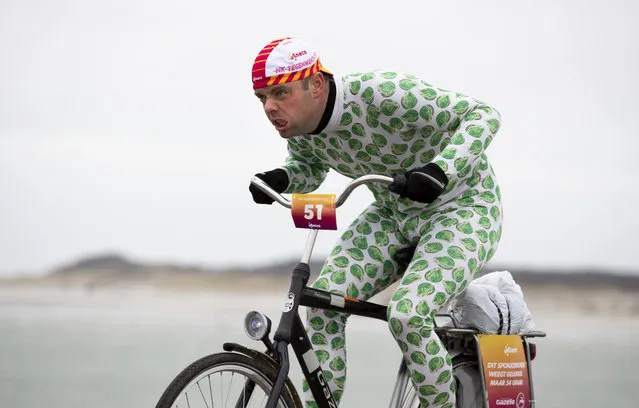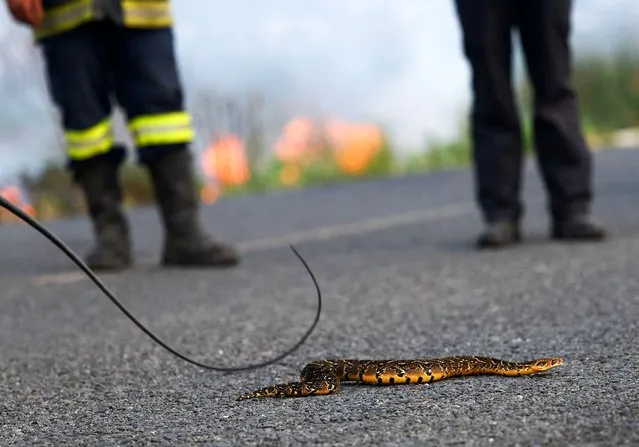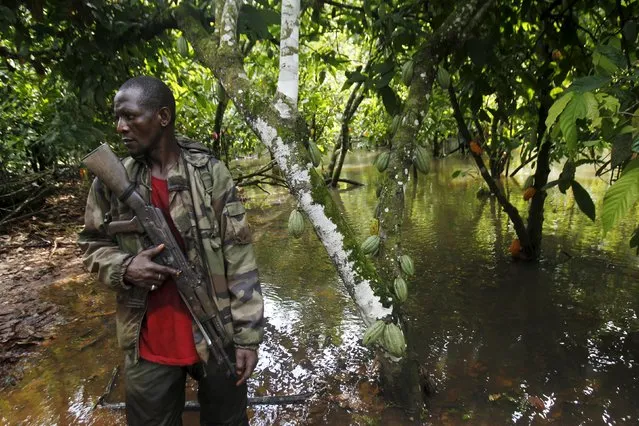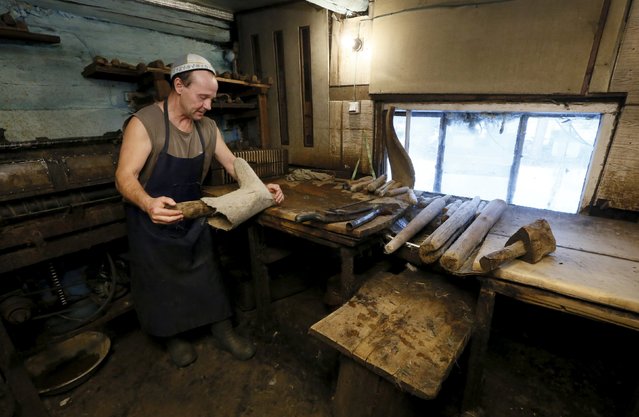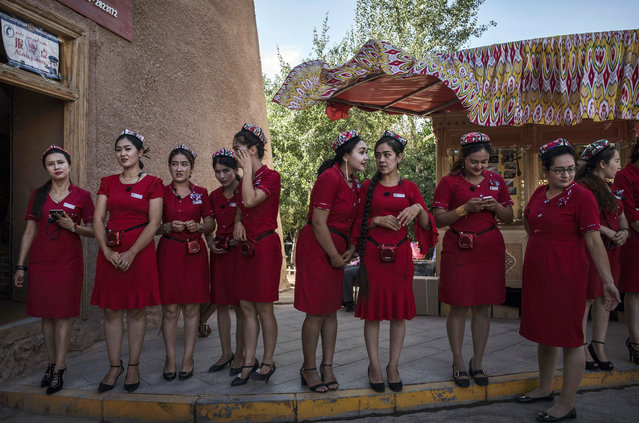
Ethnic Uyghur tourists guides wait to perform in a show for Chinese tourists on June 29, 2017 in the old town of Kashgar, in the far western Xinjiang province, China. Kashgar has long been considered the cultural heart of Xinjiang for the province's nearly 10 million Muslim Uyghurs. (Photo by Kevin Frayer/Getty Images)
03 Aug 2017 08:59:00,post received
0 comments


